Tibet
18th century
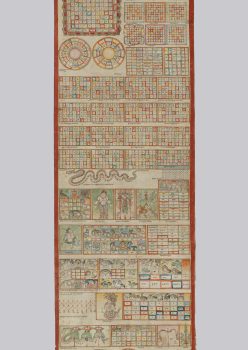
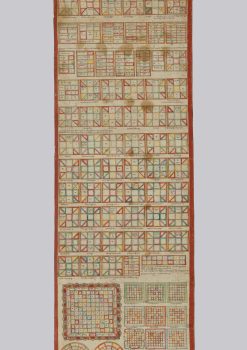
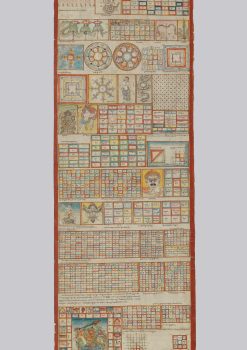
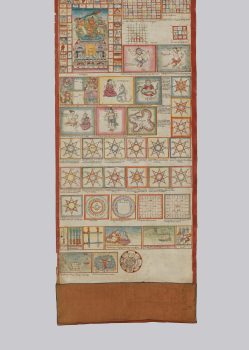
-247x350.jpg)
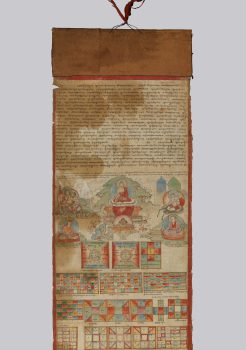
Tibet
18th century




-247x350.jpg)

This fifteen-foot-long vertical astrological handscroll contains more than a hundred charts and illustrations from the Svarodaya Tantra, a text describing astrological practices such as magic, divination, horoscopes, numerology (including martial calculations), healing, and medicine. The Svarodaya Tantra is said to have Shaivite origins in Kashmir and entered Tibet from Jumla in western Nepal during the thirteenth century. This text reached the height of its popularity in Tibet during the seventeenth and early eighteenth centuries under the regent Desi Sangye Gyatso (1653–1705), especially for its medical and military applications.The drawings in this astrological scroll are remarkable for their superb draftsmanship and the artists’ close attention to detail. Especially notable are the many lively depictions of animals. Note, for instance, the expressive face of the yak-like bovine upon which Shiva and Parvati, presumably a Tibetan version of Shiva’s characteristic bull mount Nandi. The importance of numerology is reflected throughout, with series of numbers appearing repeatedly in the various images.
While the primary religious goal for followers of Buddhism is enlightenment, many of the practices also serve secular goals related to daily life, including ethical conduct and cultivating well-being.
Teachings and precepts that offer practical and experiential guidance. In Buddhism instruction is primarily an oral tradition and is often targeted to the specific needs or disposition of a student or disciple.
Today, Tibetans primarily inhabit the Tibetan Plateau, situated between the Himalayan mountain range and the Indian subcontinent to the west, Chinese cultural regions to the east, and Mongolian cultural regions to the northeast. During the 7th to 9th century, Tibetan rulers expanded their empire across Central Asia, and established Buddhism as the state religion.
Get the latest news and stories from the Rubin, plus occasional information on how to support our work.